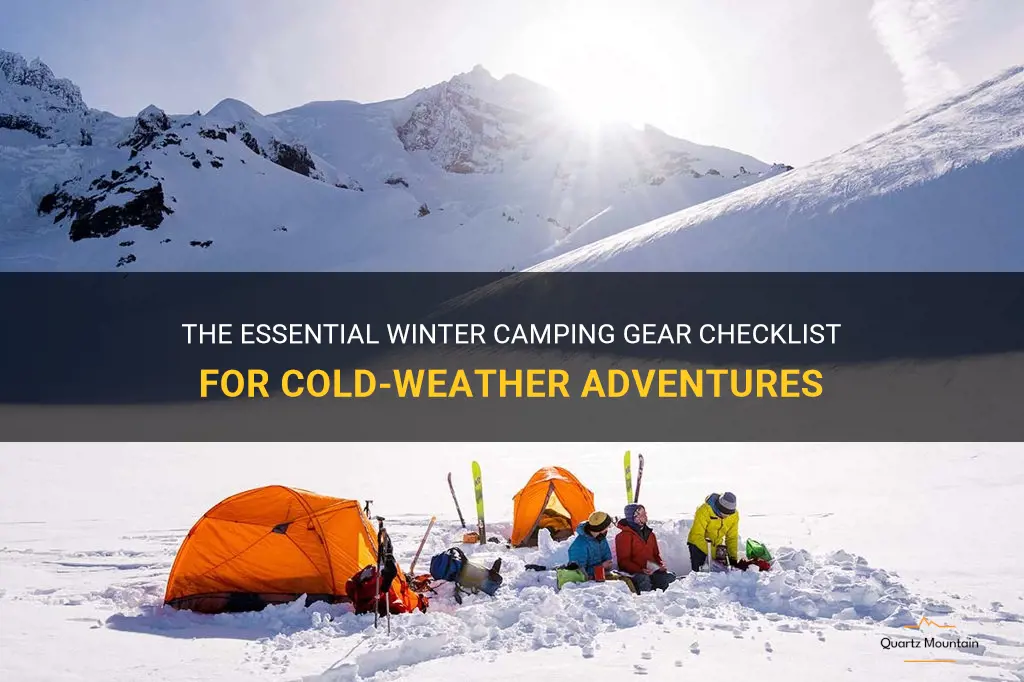
Winter camping can be an exhilarating and rewarding outdoor adventure, but it also requires careful planning and the right gear to stay safe and comfortable in cold weather conditions. Whether you're planning a backpacking trip through snow-covered landscapes or setting up camp in a winter wonderland, the essential winter camping gear checklist is your go-to resource for ensuring a successful and enjoyable cold-weather experience. From warm and insulated sleeping bags to sturdy and reliable tents, this checklist covers everything you need to brave the elements and embrace the beauty of winter on your next camping adventure. So grab your thermos of hot cocoa and get ready to discover the essential gear that will keep you warm, cozy, and prepared for any winter camping adventure.
| Characteristics | Values |
|---|---|
| Clothing | Warm layers, thermal underwear, waterproof jacket and pants, gloves, hat, scarf |
| Sleeping gear | Warm sleeping bag, sleeping pad, extra blankets |
| Shelter | Winter tent or four-season tent |
| Cooking equipment | Stove, fuel, cookware, utensils |
| Food and water | High-energy, easy-to-cook meals, water bottles, water filter or purification tablets |
| Navigation | Maps, compass,GPS |
| Fire-starting tools | Waterproof matches, lighter, firestarter |
| Lighting | Headlamp, extra batteries, lantern |
| First aid kit | Bandages, antiseptic, pain relievers, emergency blanket |
| Tools | Multi-tool, knife, shovel |
| Entertainment | Books, playing cards, portable speaker, camera |
| Additional items | Hand warmers, extra socks, hot water bottles |
What You'll Learn
- What clothing should I pack for winter camping to stay warm?
- What kind of sleeping bag and sleeping pad are best for winter camping?
- Do I need any special equipment for cooking and food storage during winter camping?
- Are there any specific items or gear that are essential for winter camping safety?
- What extra supplies should I pack in case of emergencies during winter camping?

What clothing should I pack for winter camping to stay warm?
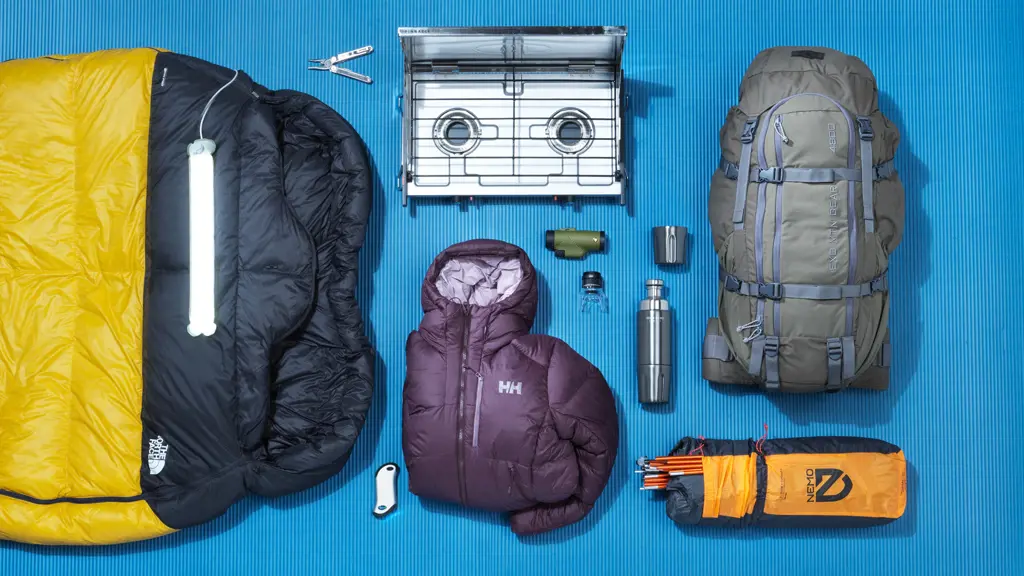
With winter camping becoming an increasingly popular activity, it is important to pack the right clothing to stay warm in cold temperatures. The key to staying comfortable in the winter wilderness is layering your clothing. By wearing multiple layers, you can trap heat and insulate your body against the cold. Here are some essential pieces of clothing to pack for winter camping:
- Base Layer: Start with a base layer that is made of moisture-wicking material such as merino wool or synthetic fabric. This layer will help to keep your skin dry by wicking away sweat. Avoid cotton as it retains moisture and can make you feel cold.
- Mid-Layer: The next layer should provide insulation. Fleece jackets or vests are great for this purpose as they are lightweight, highly insulating, and breathable. You can also consider synthetic or down-filled jackets as they provide excellent insulation.
- Outer Layer: The outer layer should protect you from wind, snow, and water. Look for a waterproof and windproof jacket and pants. GORE-TEX is a popular material choice for outer layers as it is both breathable and waterproof.
- Hat: Heat can escape from your head, so wearing a hat is essential to staying warm. Opt for a beanie or a hat that covers your ears to protect them from frostbite. Consider bringing a neck gaiter or balaclava for added protection.
- Gloves: Choose gloves that provide insulation and are waterproof. Look for gloves with adjustable cuffs to seal out cold air and moisture. Consider bringing a pair of liner gloves to wear under your outer gloves for added warmth.
- Socks: Invest in good-quality, moisture-wicking socks made from materials such as merino wool. Avoid cotton socks as they retain moisture and can make your feet feel cold. Pack multiple pairs of socks and consider wearing a thin liner sock underneath for added warmth.
- Boots: Choose insulated, waterproof boots that provide good traction. Look for boots with a thick sole and consider getting them a size larger to accommodate for thicker socks layering.
- Thermal Underwear: Depending on the temperature, you may want to wear thermal underwear for added warmth. These are typically made of a blend of synthetic materials and are designed to trap heat close to your body.
- Sleeping Gear: Don't forget to pack warm sleeping gear such as a high-quality sleeping bag rated for cold temperatures. Consider bringing a sleeping pad or an insulated mattress to provide extra insulation from the cold ground.
- Accessories: It is important to protect your extremities from the cold. Pack warm accessories such as hand warmers, toe warmers, and ear muffs for added comfort.
Remember, it is better to have too many layers and remove them if you get too warm, rather than not having enough layers and being cold. It is also essential to stay dry, as moisture can quickly lead to hypothermia in cold conditions. By packing the right clothing and layering properly, you can enjoy winter camping and stay warm even in freezing temperatures.
Essential Items for a Memorable Safari Adventure in Botswana
You may want to see also

What kind of sleeping bag and sleeping pad are best for winter camping?
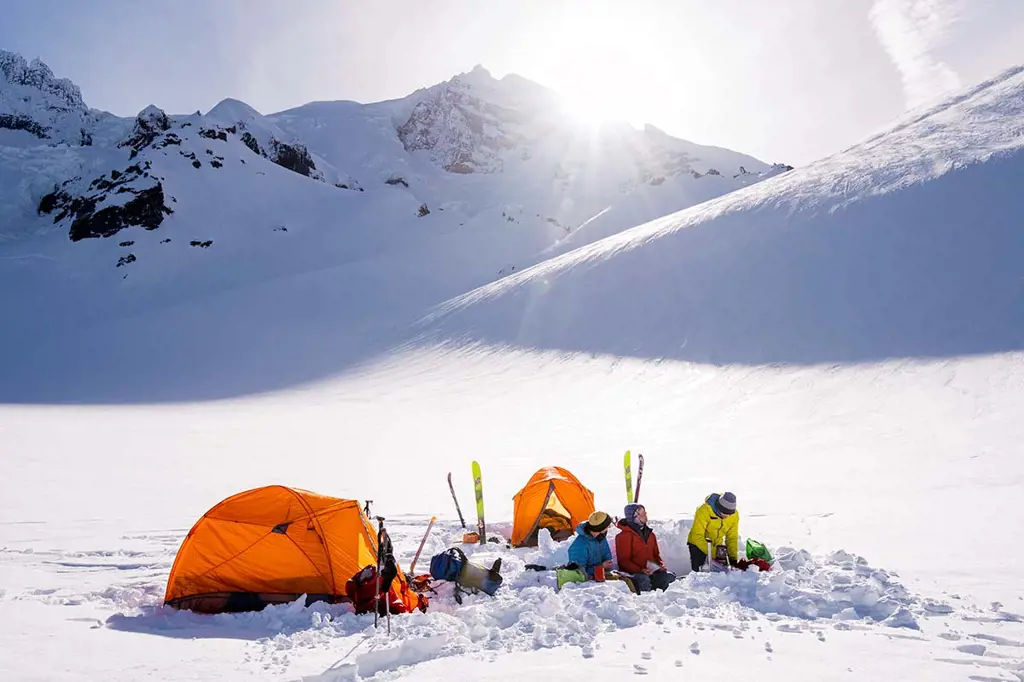
When it comes to winter camping, having the right gear is crucial for staying warm and comfortable. Two essential pieces of gear are a sleeping bag and a sleeping pad. But which ones are best for winter camping? In this article, we will discuss the features that make a sleeping bag and sleeping pad suitable for winter camping and provide some recommendations.
Sleeping Bag:
- Temperature Rating: The most important feature to consider when choosing a winter sleeping bag is its temperature rating. Look for a bag that has a lower temperature rating than the coldest temperatures you expect to encounter. For example, if you plan to camp in temperatures as low as -10°C, choose a sleeping bag with a temperature rating of -15°C or lower.
- Insulation: There are two main types of insulation used in sleeping bags: down and synthetic. Down insulation is known for its warmth-to-weight ratio and compressibility, making it ideal for cold temperatures. Synthetic insulation, on the other hand, retains its warmth even when wet, which can be an advantage in winter conditions where moisture is present.
- Hood and Draft Collar: Look for a sleeping bag that has a hood and a draft collar. These features help to seal in warmth and prevent cold air from entering the bag. The hood should have a drawstring or cinch cord to adjust the fit, ensuring that no heat escapes through the head opening.
- Length and Width: Choosing the right length and width of the sleeping bag is important for comfort and warmth. A bag that is too short or narrow can restrict movement and compress the insulation, reducing its effectiveness. Look for a bag that allows you to stretch out comfortably and has enough room for movement without creating large air pockets that can make it difficult to warm up.
Sleeping Pad:
- Insulation: In addition to providing cushioning and comfort, a sleeping pad acts as an insulating barrier between you and the cold ground. Look for a sleeping pad that has an insulation layer, such as foam or synthetic fibers, to help retain body heat.
- R-Value: The R-value measures the insulation properties of a sleeping pad. For winter camping, choose a pad with a higher R-value, typically ranging from 4 to 6. This will provide better insulation against the cold ground and help you stay warm throughout the night.
- Thickness: A thicker sleeping pad can offer more comfort and insulation. Look for a pad that is at least 2 inches thick to provide sufficient cushioning and insulation from the cold ground.
- Size and Weight: Consider the size and weight of the sleeping pad, especially if you will be backpacking or carrying it for long distances. Look for a pad that is lightweight and packable without sacrificing comfort or insulation.
Recommended Sleeping Bags and Sleeping Pads:
- Sleeping Bags:
- The North Face Inferno -20°F Sleeping Bag
- Mountain Hardwear Phantom Torch 3°F Sleeping Bag
- Western Mountaineering UltraLite 20°F Sleeping Bag
- Sleeping Pads:
- Therm-a-Rest NeoAir XTherm Sleeping Pad (R-Value: 6.9)
- Exped DownMat XP 9 Sleeping Pad (R-Value: 8)
- NEMO Tensor Insulated Sleeping Pad (R-Value: 4.5)
In conclusion, the best sleeping bag and sleeping pad for winter camping are those that have a lower temperature rating, good insulation, hoods and draft collars, an appropriate length and width, and insulation layers with a higher R-value. By choosing the right gear, you can ensure a warm and comfortable night's sleep in even the coldest winter conditions.
Essential Items to Pack for Your Trip to Duluth
You may want to see also

Do I need any special equipment for cooking and food storage during winter camping?
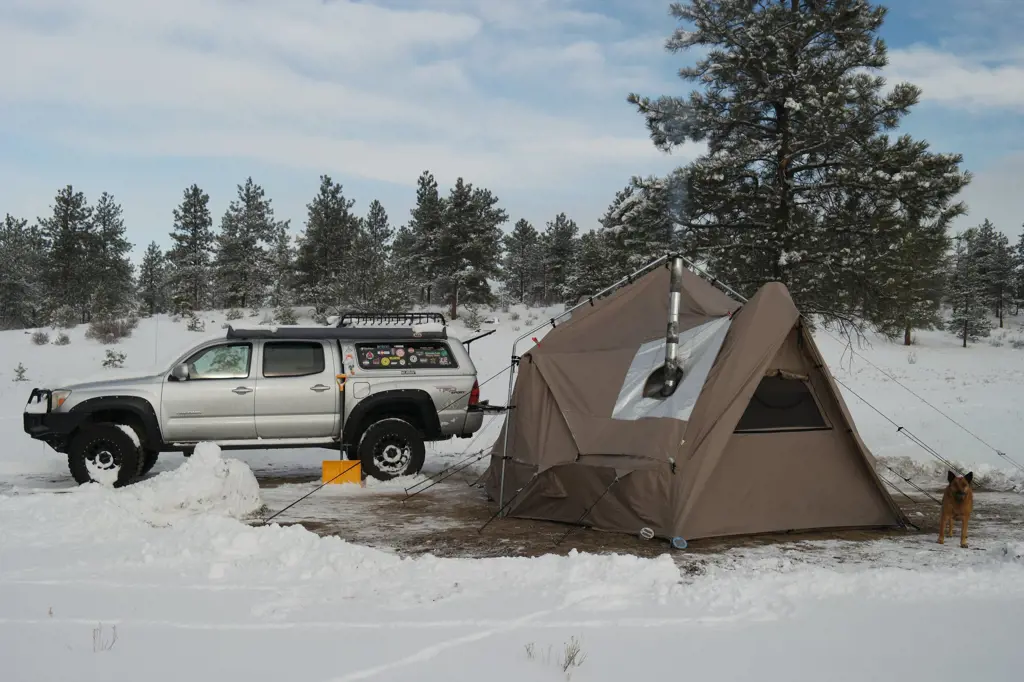
Winter camping can be a unique and exciting experience, but it also requires some additional preparation when it comes to cooking and food storage. In order to ensure that you have everything you need to cook and store your food safely during winter camping, there are a few special equipment items that you should consider bringing along.
One of the most important pieces of equipment for cooking during winter camping is a good quality stove. Since temperatures can drop significantly during winter months, it's crucial to have a stove that can perform well in cold weather conditions. Look for a stove that is specifically designed for winter camping, as these stoves are often equipped with features such as built-in windshields and pressure regulators, which help to maintain a consistent flame even in extreme cold.
Another essential piece of equipment for winter camping cooking is a reliable set of cookware. When it comes to winter cooking, it's important to choose cookware that is made from materials that can withstand low temperatures without cracking or warping. Hard-anodized aluminum or stainless steel cookware is a popular choice for winter camping, as these materials are durable and can withstand the cold. Additionally, consider bringing along a sturdy pot grabber or a set of heat-resistant gloves, as these items can help you safely handle hot pots and pans when the temperatures are freezing.
In terms of food storage, it's important to have a well-insulated cooler or food storage container. Keeping your food at a safe temperature is crucial during winter camping, as low temperatures can cause food to freeze or spoil quickly. Look for a cooler or container that is specifically designed for winter camping, as these containers are often insulated with thick walls and have tight-fitting lids to help keep the cold air out and your food fresh.
Additionally, consider using freeze-dried or dehydrated foods for your winter camping trip. These types of foods are lightweight, easy to prepare, and have a long shelf life. They are also a great option for winter camping because they don't require refrigeration, which can be challenging in cold weather conditions.
Lastly, don't forget to bring along some extra fuel for your stove. When camping in winter, fuel consumption can increase due to the colder temperatures, so it's important to have enough fuel to keep your stove running throughout your trip. Consider bringing extra fuel canisters or a fuel bottle that can be refilled as needed.
In conclusion, cooking and food storage during winter camping requires some special equipment to ensure that your food stays safe and your meals are enjoyable. A good quality stove, durable cookware, an insulated cooler or container, and freeze-dried or dehydrated foods are all essential items to have on hand. Additionally, don't forget to bring extra fuel to keep your stove running in the cold temperatures. With the right equipment, you can enjoy delicious meals even in the chilly winter camping conditions.
The Essential Items to Pack for a Successful Interview
You may want to see also

Are there any specific items or gear that are essential for winter camping safety?
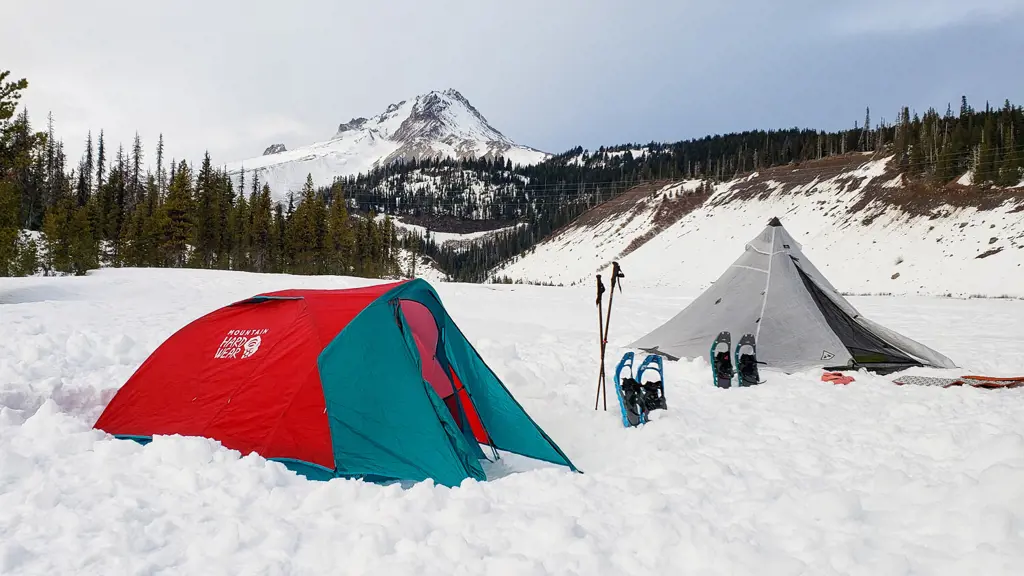
When it comes to winter camping, safety is of the utmost importance. The frigid temperatures and potentially hazardous conditions present a unique set of challenges that must be addressed. To ensure a safe and enjoyable winter camping experience, there are several specific items and gear that are essential to have on hand.
- Insulated Sleeping Bag: A high-quality sleeping bag with proper insulation is crucial for staying warm during cold winter nights. Look for a sleeping bag that is rated for below freezing temperatures and has a hood to trap heat. It is also advisable to use a sleeping pad or foam mat beneath your sleeping bag to provide additional insulation from the cold ground.
- Four-Season Tent: A four-season tent is designed to withstand harsh winter conditions, including heavy snowfall and strong winds. These tents are constructed with stronger materials and additional guy lines to ensure stability. Four-season tents are also typically designed with proper ventilation to prevent condensation build-up inside the tent.
- Warm Clothing: Layering is key when it comes to staying warm in the winter. Bring a variety of clothing options, including thermal base layers, insulating mid-layers, and a waterproof outer layer. Don't forget to pack warm socks, gloves, a hat, and a scarf to protect your extremities from the cold.
- Snowshoes or Crampons: If you plan on hiking or exploring snowy terrain, snowshoes or crampons are essential for traction and stability. Snowshoes are designed to distribute your weight and prevent sinking into the snow, while crampons provide traction on icy surfaces. Choose the appropriate gear based on the specific conditions you expect to encounter.
- Portable Stove: Having a reliable heat source for cooking and boiling water is essential in winter camping. A portable stove that runs on a fuel such as propane or butane is a convenient and efficient option. Make sure to bring extra fuel canisters to last for the duration of your trip.
- Emergency Kit: It is crucial to be prepared for any unexpected situations that may arise during winter camping. Pack an emergency kit that includes items such as a first aid kit, a compass, a map, a headlamp, extra batteries, a multi-tool, and fire-starting materials. Familiarize yourself with how to use each item in your emergency kit before heading out into the wilderness.
- Navigation Tools: In winter conditions, it is easy to get disoriented and lose track of your surroundings. It is essential to have reliable navigation tools such as a compass and a map to ensure you stay on track and avoid getting lost. Familiarize yourself with how to use these tools before your trip.
- Communication Device: In the event of an emergency, it is crucial to have a way to communicate for help. Bring a fully charged cell phone or a two-way radio and keep it protected from the cold in an insulated case or pocket.
In conclusion, winter camping requires specific gear and items to ensure safety in the cold and potentially hazardous conditions. Investing in quality gear such as an insulated sleeping bag, a four-season tent, and warm clothing is essential for staying warm and protected. Additionally, having the necessary tools, equipment, and emergency supplies can be life-saving in unexpected situations. Prioritize safety when planning your winter camping trip and always be prepared for any challenges that may arise.
The Essential Checklist: What Every Businessman Should Pack for South Korea
You may want to see also

What extra supplies should I pack in case of emergencies during winter camping?
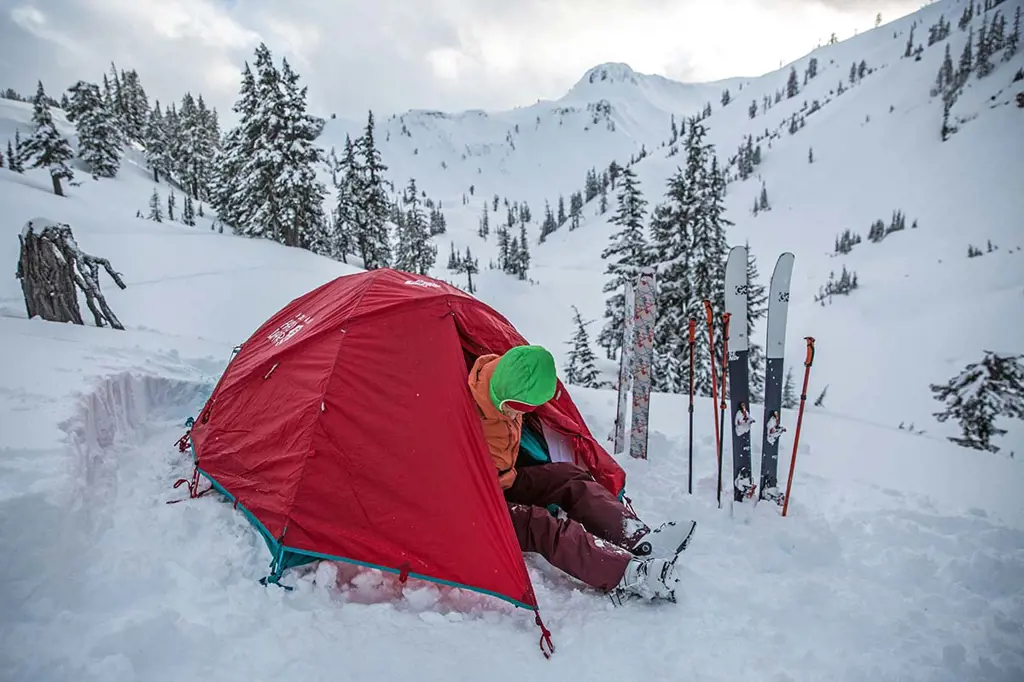
Winter camping can be a thrilling adventure, but it also presents unique challenges and risks. One of the most important considerations when planning a winter camping trip is being prepared for emergencies. In addition to the standard camping supplies, it is essential to pack extra items that can help you stay safe and comfortable in case of unexpected situations.
Emergency Shelter:
In the event of extreme weather conditions, it is crucial to have a backup shelter in case your tent gets damaged or fails to provide adequate protection. A lightweight emergency bivvy or a compact tarp can serve as a makeshift shelter and keep you dry and warm.
Extra Clothing:
In winter, temperatures can drop rapidly, and hypothermia becomes a real threat. Pack additional layers of clothing, including insulating base layers, fleece or wool sweaters, and a waterproof jacket. Don't forget to include extra socks and gloves to keep your extremities warm and dry.
Sleeping System Modifications:
Adapting your sleeping system for winter is essential for a good night's sleep. Add a foam or inflatable sleeping pad with a high insulation value to provide a barrier between you and the cold ground. A winter-rated sleeping bag is crucial to keep you warm. Consider using a sleeping bag liner or adding a quilt or extra blanket for added insulation in extremely cold temperatures.
Fire-starting Supplies:
Starting a fire can be challenging in winter due to damp or snowy conditions. Pack extra fire-starting supplies such as waterproof matches, firestarter cubes, or a reliable fire starter tool. Including a small axe or saw in your kit can help you gather firewood more easily.
Emergency Communication Devices:
Winter camping often means venturing into remote areas with limited cell phone reception. Consider bringing a satellite phone, a personal locator beacon (PLB), or a two-way radio to communicate with the outside world in case of emergencies.
Navigation Tools:
Winter conditions can make it difficult to navigate, especially if visibility is poor. Carry a map, compass, and a GPS device to help you stay on track and avoid getting lost. Additionally, make sure you have a headlamp or flashlight with extra batteries for nighttime navigation.
First Aid Kit:
A well-stocked first aid kit is essential for any camping trip, but it becomes even more critical in winter. Include extra supplies such as hand warmers, heat packs, blister care products, and cold and flu medication. Familiarize yourself with basic first aid procedures for winter-related injuries like frostbite and hypothermia.
Emergency Food and Water:
In case of unexpected situations or prolonged stays, pack extra food that does not require cooking or can be easily prepared. High-calorie energy bars, dehydrated meals, and trail mix are good options. Carry a sufficient amount of water or a water filter to ensure hydration if your water source becomes frozen or inaccessible.
Repair Kit:
Having a repair kit can help you fix any equipment failure quickly. Include duct tape, a multitool, extra tent stakes, and a sewing kit for minor repairs.
Winter-specific Tools:
Depending on your activities, consider packing ice axes, crampons, snowshoes, or trekking poles to help navigate icy and snowy terrain safely.
Remember, preparation and planning are key when camping in winter conditions. Familiarize yourself with the area's weather forecast, potential hazards, and emergency protocols. It is essential to inform someone about your trip details and expected return date before setting off. By taking the necessary precautions and packing these extra supplies, you can ensure a safe and enjoyable winter camping experience.
The Essential Guide to Packing for Amsterdam in December
You may want to see also
Frequently asked questions
When it comes to clothing for winter camping, it's important to prioritize warmth and layering. Be sure to pack thermal base layers, such as long underwear, to help trap heat close to your body. Mid-layers, like fleece or down jackets, provide insulation and can be added or removed depending on the temperature. Outer layers should be waterproof and windproof to protect against the elements. Don't forget to pack warm socks, a hat, gloves, and a scarf or neck gaiter to keep your extremities cozy.
Sleeping gear is crucial for staying warm and comfortable during winter camping. Invest in a four-season sleeping bag that's rated for sub-zero temperatures. It's also a good idea to use a sleeping pad with insulation to provide a barrier between you and the cold ground. Consider using a sleeping bag liner for added warmth, and if you're camping in extremely low temperatures, a bivy sack or winter tent can provide extra protection from the elements.
Cooking and staying warm are essential aspects of winter camping. Pack a camping stove with fuel that can withstand freezing temperatures, as well as cookware and utensils suitable for winter conditions. Don't forget to pack plenty of high-calorie, non-perishable foods to fuel your body and keep you warm. Hot beverages like tea or cocoa can also help warm you up from the inside out. Additionally, pack plenty of extra fuel, fire starters, and waterproof matches for starting a fire and staying warm at camp.
In addition to clothing, sleeping gear, and cooking supplies, there are a few other essential items to pack for winter camping. A good quality headlamp or flashlight is crucial for navigating in the dark, as the days are shorter during winter. Pack a first aid kit with supplies specific to winter conditions, such as hand warmers, emergency blankets, and blister treatment. Additionally, a multi-tool or knife, extra batteries, a map and compass, and a portable phone charger are practical items to have on hand in case of emergencies.







